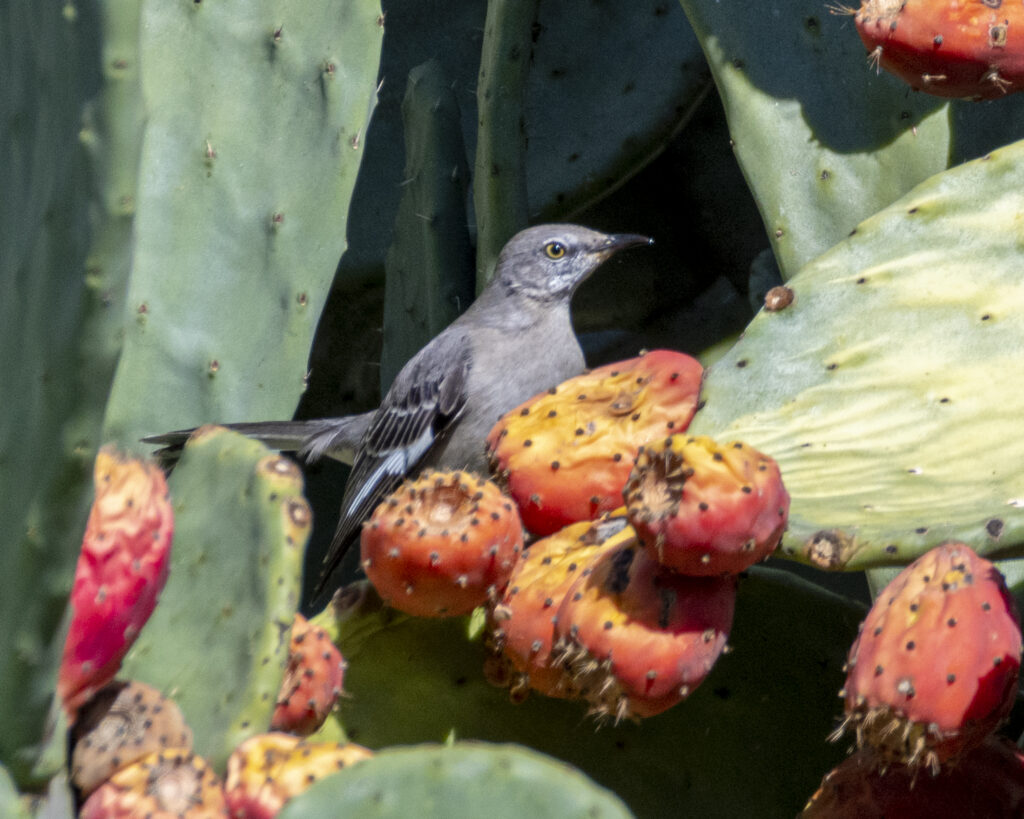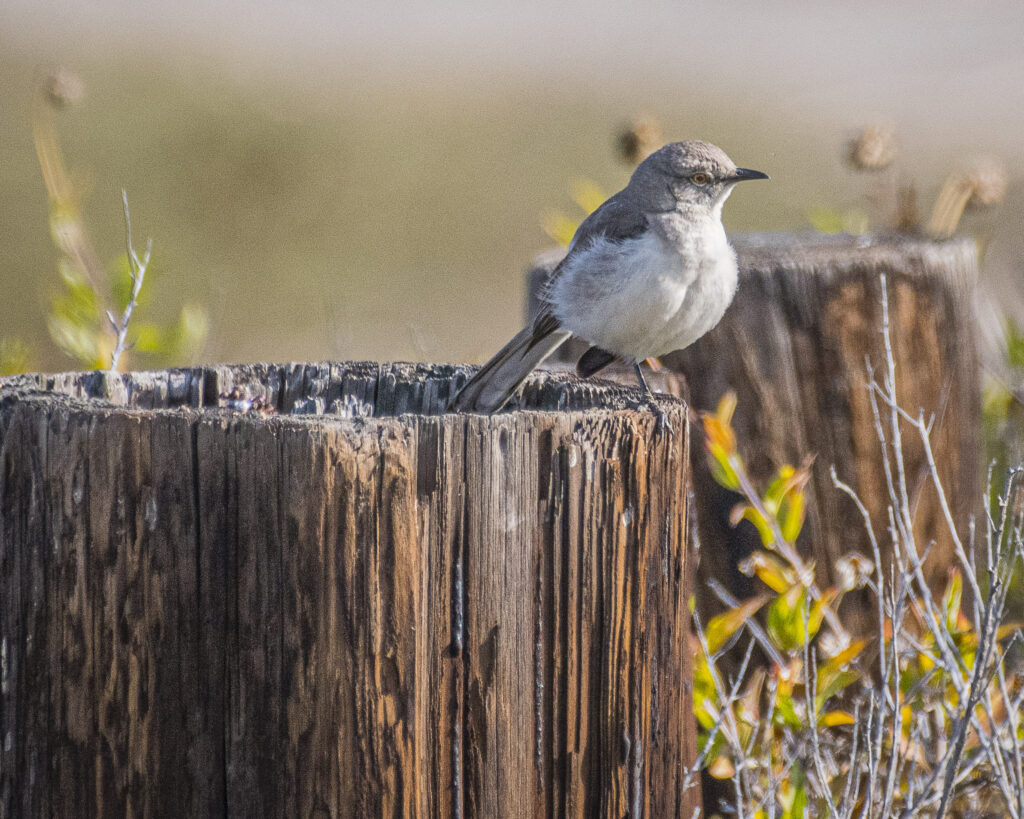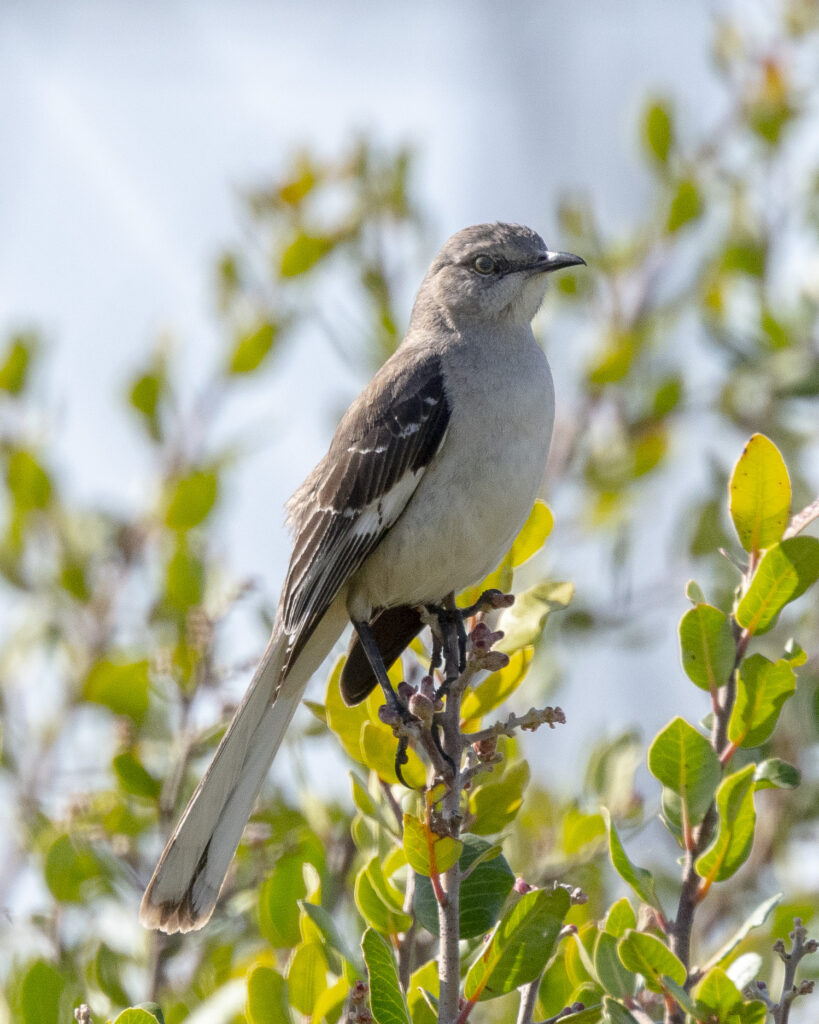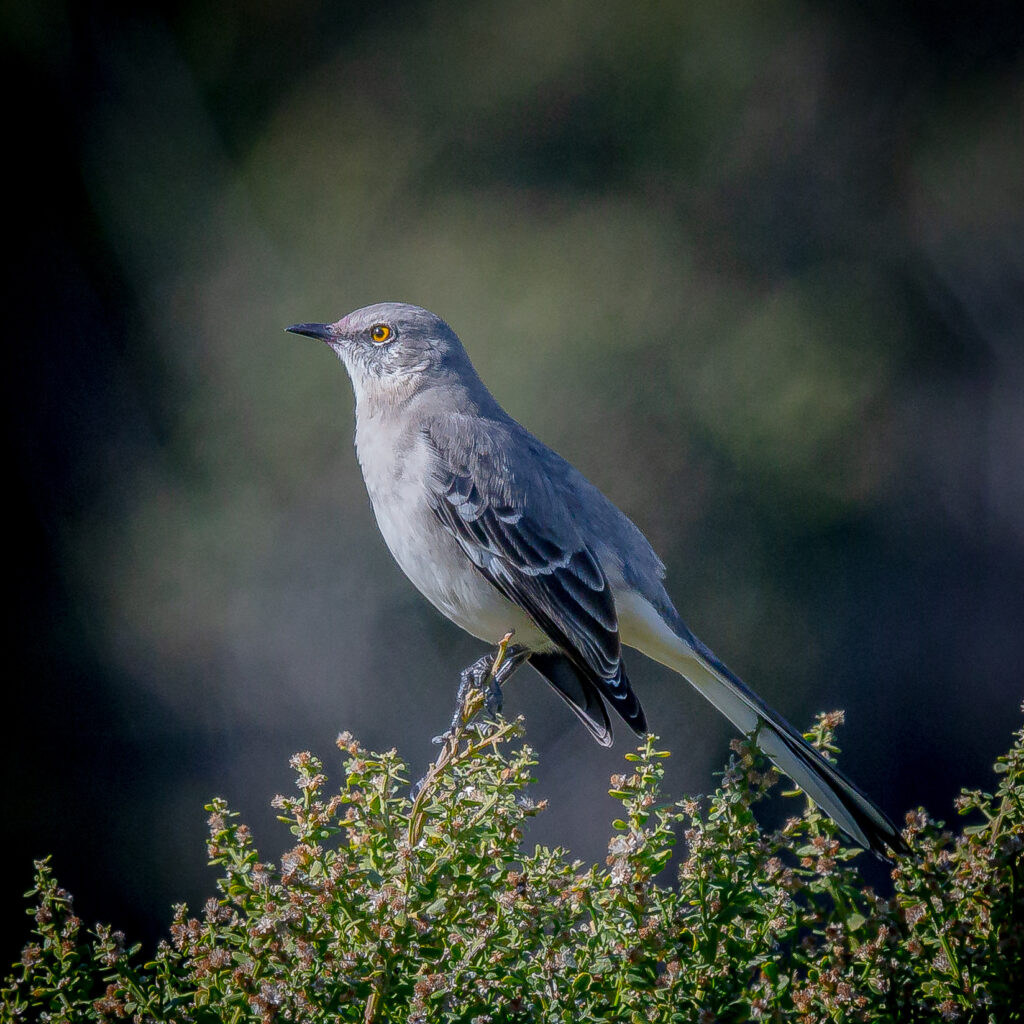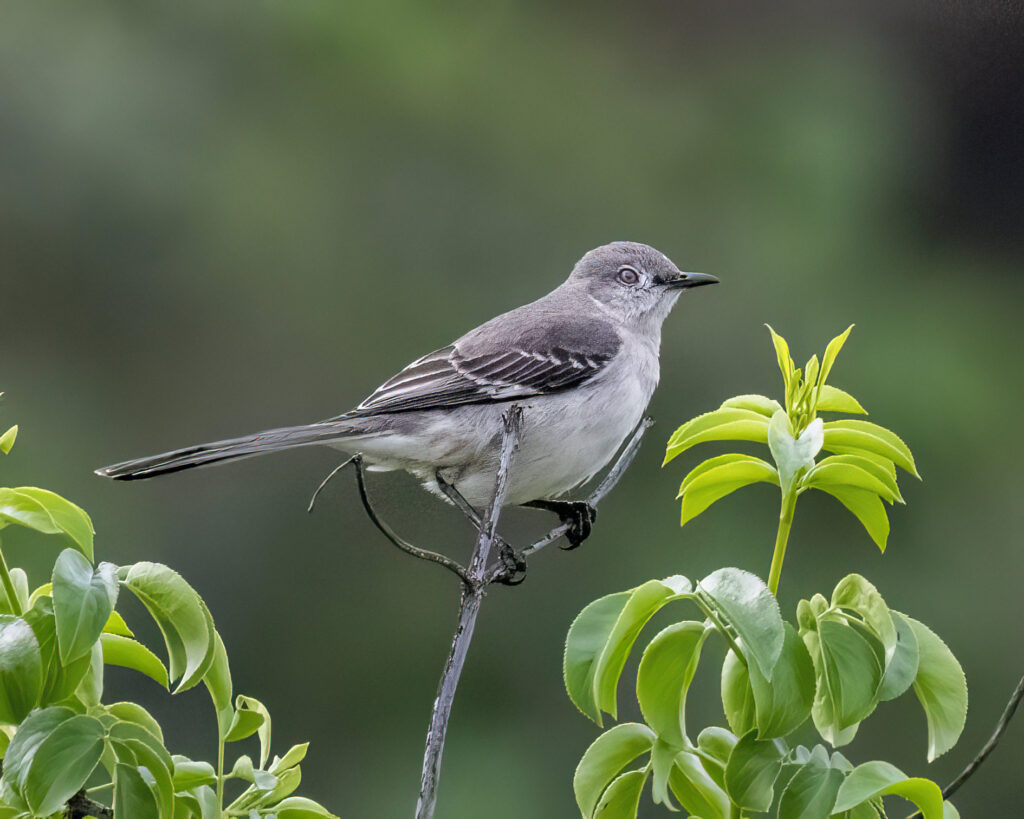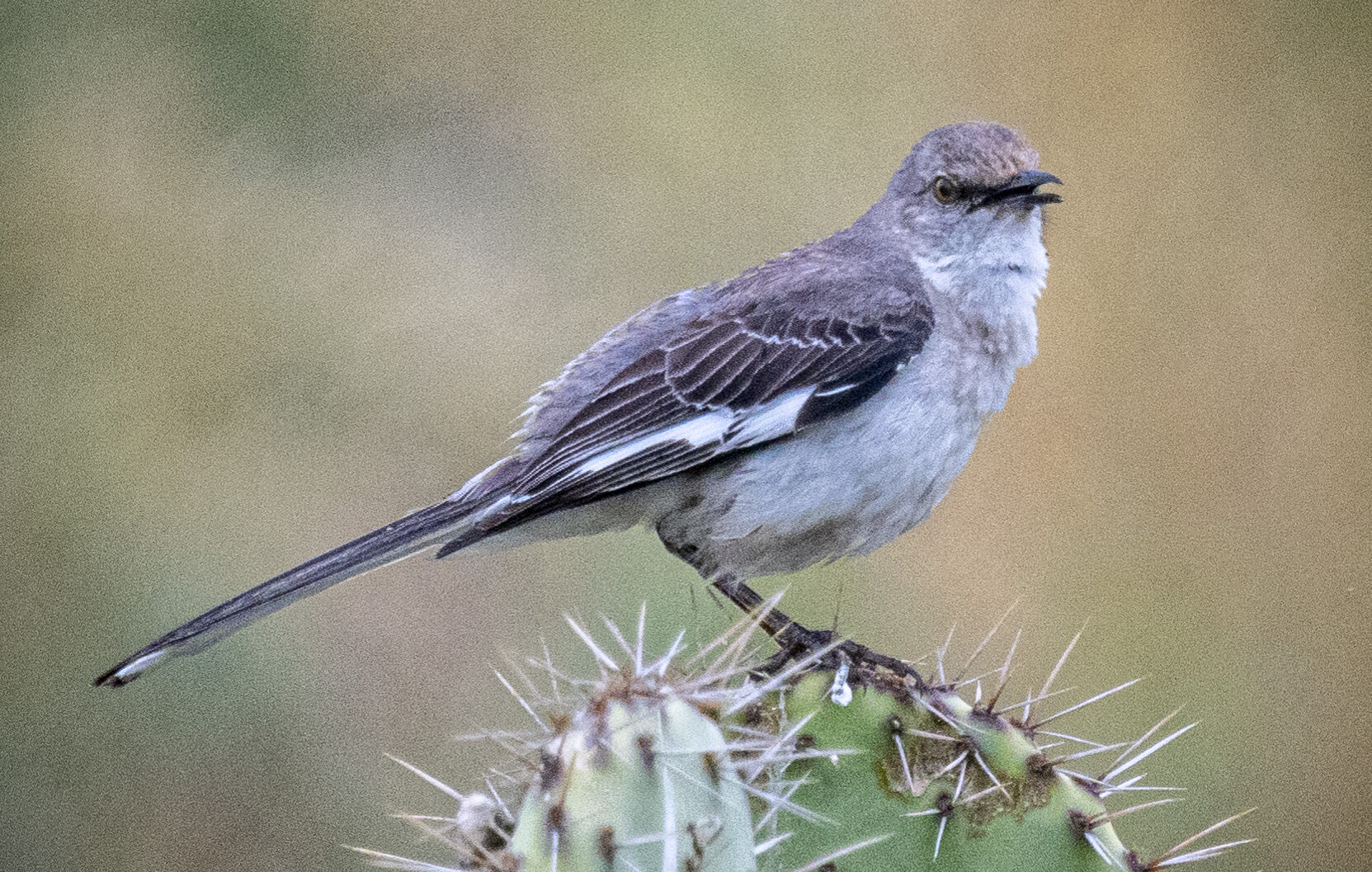
Northern Mockingbird
(Español: Cenzontle Norteño)
The Northern Mockingbird is a non-migrating resident breeding bird with an outsized voice, personality and presence. Its Latin name, Mimus polyglottos, literally translates to “many-tongued mimic.” A polyglot is a person who speaks many languages, here referencing this bird’s ability to imitate a multitude of sounds from its environment. They are known for their ability to mimic everything from screaming car sirens to crickets, frogs and a vast array neighboring bird species. Researchers believe they produce these copycat calls to impress, beguile, and ultimately attract potential mates. Their vast repertoire also serves as a potent territorial dominance display.
The familiar Northern Mockingbird has easily adapted to human development, taking up residence across suburban towns and cities. Wide-open lawns and tree filled parks are perfect for hunting their insect prey, and males often sing from perches atop houses and telephone poles, where their performance can involve leaping into the air and gracefully fluttering back down.
The striking white patches on the gray Northern Mockingbird’s wings and long white outer tail feathers serve several purposes. The birds often show off these dazzling plumes during mating rituals, and they also menacingly flash them when defending their territory from potential predators like hawks and snakes. The flashing white patches also startle hapless insects into popping straight up into its sharp snapping bill.
Mockingbirds can be extraordinarily territorial. They’ve been known to swoop and dive at pretty much anything, including people venturing too close to their artfully concealed nest in dense foliage up to 10 feet off the ground. They will also relentlessly chase other birds away from their preferred winter food sources, like fruit-bearing trees and bushes bursting with berries. The California native Toyon bush is a coveted food source throughout the Urban Forest.
Watch for the Northern Mockingbird determidly vying for feeding rights along with other berry-loving bird species throughout the chilly winter months.
Bird gallery
